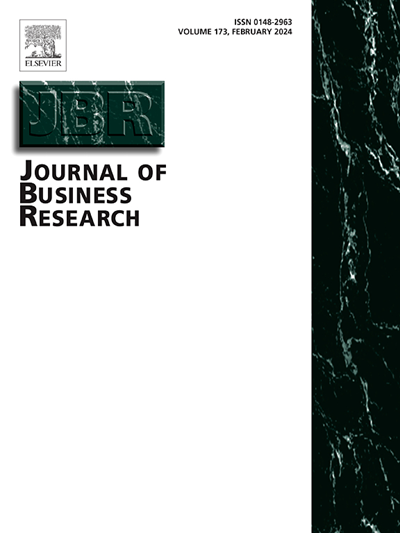消费者要求透明......但他们真的会参与吗?探索品牌透明度信息的动机和互动方式
IF 10.5
1区 管理学
Q1 BUSINESS
引用次数: 0
摘要
大众媒体将消费者描述为越来越多地寻求品牌透明度,想要更多地了解他们的流程、产品和价值观。本研究旨在了解消费者如何以及为什么处理与品牌透明度相关的信息并与之互动,并探讨参与度较低的消费者是否以及如何形成品牌透明度感知。本文采用定性方法,对23个深度访谈进行了系统的归纳分析。该研究发现了消费者如何处理与透明度相关的信息以形成品牌透明度感知的三种方法(主动、被动和休眠)。本文概述了五种动机状态,以解释消费者为什么参与品牌透明度。透明度在两种情况下变得突出:决策风险和个人相关性。这些发现以精化可能性模型和自我决定理论为基础,揭示了一个动态的、反复的感知形成过程。管理意义强调根据不同的信息需求定制透明度策略,扩大消费者接触点,并提高显著性以有效地吸引注意力。本文章由计算机程序翻译,如有差异,请以英文原文为准。
Consumers demand transparency… but do they actually engage? Exploring motives and interactions with brand transparency information
Popular press depicts consumers as increasingly seeking brand transparency, wanting to know more about their processes, products, and values. This research seeks to understand how and why consumers process and interact with brand transparency-related information and explores whether and how less-engaged consumers form brand transparency perceptions. A qualitative approach is undertaken with twenty-three in-depth interviews for a systematic, inductive analysis. The study finds three approaches (active, passive, and dormant) for how consumers process transparency-related information to form brand transparency perceptions. Five motivational states are outlined to explain why consumers engage with brand transparency. Transparency becomes salient under two conditions: risk in decision-making and personal relevance. The findings, underpinned by the Elaboration Likelihood Model and Self-Determination Theory, reveal a dynamic, iterative process of perception formation. Managerial implications emphasize tailoring transparency strategies to diverse informational needs, broadening consumer touchpoints, and enhancing salience to capture attention effectively.
求助全文
通过发布文献求助,成功后即可免费获取论文全文。
去求助
来源期刊

Journal of Business Research
BUSINESS-
CiteScore
20.30
自引率
10.60%
发文量
956
期刊介绍:
The Journal of Business Research aims to publish research that is rigorous, relevant, and potentially impactful. It examines a wide variety of business decision contexts, processes, and activities, developing insights that are meaningful for theory, practice, and/or society at large. The research is intended to generate meaningful debates in academia and practice, that are thought provoking and have the potential to make a difference to conceptual thinking and/or practice. The Journal is published for a broad range of stakeholders, including scholars, researchers, executives, and policy makers. It aids the application of its research to practical situations and theoretical findings to the reality of the business world as well as to society. The Journal is abstracted and indexed in several databases, including Social Sciences Citation Index, ANBAR, Current Contents, Management Contents, Management Literature in Brief, PsycINFO, Information Service, RePEc, Academic Journal Guide, ABI/Inform, INSPEC, etc.
 求助内容:
求助内容: 应助结果提醒方式:
应助结果提醒方式:


